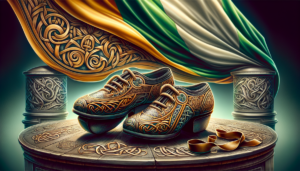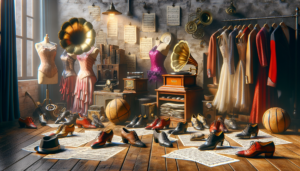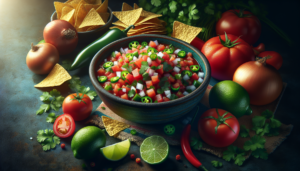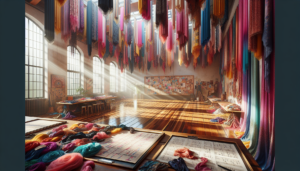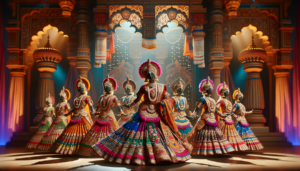Modern dance is a distinctive art form that emerged as a rejection of the rigid structures and techniques of classical ballet. It is characterized by an emphasis on creativity, individual expression, and freedom of movement. Modern dance integrates diverse techniques and forms, drawing influences from various cultural and artistic movements throughout history. As a medium for storytelling and emotional expression, modern dance continues to captivate audiences and inspire dancers around the world.
Introduction to Modern Dance
The Origins and Evolution of Modern Dance
Modern dance traces its roots to the early 20th century, when pioneering dancers and choreographers began to challenge the conventions of classical ballet. Isadora Duncan, often considered the mother of modern dance, sought to create a more natural and expressive form of movement. Other influential figures, such as Martha Graham and Merce Cunningham, further developed and refined modern dance techniques, each bringing their unique vision and style to the art form.
Over the decades, modern dance has continued to evolve, incorporating elements from various disciplines and cultures. From the groundbreaking work of Alvin Ailey to the contemporary innovations of choreographers like Pina Bausch and William Forsythe, modern dance has remained a dynamic and ever-changing landscape.
Key Characteristics of Modern Dance
Modern dance is characterized by its rejection of the strict codes and techniques of classical ballet. Instead, it emphasizes:
- Freedom of movement and individual expression
- Use of gravity and body weight
- Exploration of space and dynamics
- Integration of diverse techniques and styles
- Emotional and narrative content
Modern dancers often strive to create a strong connection between their inner emotions and their physical movements. They may use improvisational techniques to discover new ways of moving and expressing themselves, allowing for a greater range of artistic possibilities.
Popular Modern Dance Styles
Contemporary Dance
Contemporary dance is a style that has emerged from the foundation of modern dance, but incorporates elements from various other dance genres, such as ballet, jazz, and hip-hop. It is known for its versatility and eclecticism, often blurring the lines between different dance forms.
Contemporary dancers may draw upon a wide range of techniques and influences to create unique and expressive performances. This style often explores complex themes and emotions, using abstract and non-linear choreography to convey its message.
Post-Modern Dance
Post-modern dance developed as a reaction against the formalism and theatricality of modern dance. It sought to challenge traditional notions of dance and performance, often incorporating everyday movements and unconventional spaces.
Post-modern choreographers, such as Trisha Brown and Yvonne Rainer, experimented with chance procedures and minimalism, stripping dance down to its most essential elements. They also explored the relationship between dance and other art forms, such as visual art and performance art.
Somatic Dance
Somatic dance focuses on the internal experience of the dancer, emphasizing body awareness, alignment, and the mind-body connection. It draws upon various somatic practices, such as Alexander Technique, Feldenkrais Method, and Body-Mind Centering.
Somatic dancers aim to cultivate a deep understanding of their own body and its sensations, using this awareness to inform their movement and expression. This approach can lead to a more grounded, centered, and holistic dance practice.
Techniques and Choreography in Modern Dance
Fundamental Techniques
Modern dance encompasses a wide range of techniques and styles, each with its own unique focus and approach. Some of the fundamental techniques include:
- Graham Technique: Developed by Martha Graham, this technique emphasizes contraction and release, spiral movements, and dramatic expression.
- Horton Technique: Created by Lester Horton, this technique focuses on strengthening and aligning the body, using precise anatomical principles.
- Limón Technique: Developed by José Limón, this technique emphasizes the use of weight, breath, and momentum to create expressive and fluid movements.
- Release Technique: This approach focuses on releasing tension and finding ease and efficiency in movement, often incorporating principles from somatic practices.
Modern dancers often train in multiple techniques to develop a well-rounded skill set and to expand their artistic range.
The Role of Improvisation
Improvisation plays a significant role in modern dance, both as a tool for generating choreographic material and as a performance practice in its own right. By exploring movement spontaneously, dancers can tap into their creativity, discover new possibilities, and develop a deeper understanding of their own body and expression.
Many modern dance choreographers use improvisation as a key part of their creative process, allowing dancers to contribute their own ideas and experiences to the work. Improvisation can also be used as a performance element, with dancers creating movement in real-time, responding to each other, the music, and the audience.
Creating Choreography
Modern dance choreography is often a collaborative process, with the choreographer working closely with the dancers to develop movement material and shape the overall structure of the piece. Choreographers may draw inspiration from a wide range of sources, such as literature, visual art, personal experiences, or social and political issues.
When creating choreography, modern dance artists often consider elements such as:
- Space: How the dancers move through and interact with the performance space
- Time: The rhythm, tempo, and phrasing of the movement
- Energy: The quality and dynamics of the movement, such as smooth or sharp, light or heavy
- Relationship: The interactions and connections between dancers
- Theme: The underlying concept or narrative that the choreography seeks to express
By manipulating these elements, choreographers can create powerful and evocative works that communicate their artistic vision and engage audiences on a deep level.
Learning and Practicing Modern Dance
Educational Resources
For those interested in learning modern dance, there are numerous educational resources available, including:
- Dance schools and studios offering modern dance classes and workshops
- University and college dance programs, which provide comprehensive training in modern dance techniques and theory
- Online tutorials and instructional videos, which can be a helpful supplement to in-person training
- Dance books and journals, which offer insights into the history, philosophy, and practice of modern dance
By exploring these resources, aspiring modern dancers can gain a solid foundation in the art form and develop their skills and artistry.
MasterClass and Online Courses
In recent years, online learning platforms like MasterClass have made it possible for dance enthusiasts to learn from some of the world’s most renowned dancers and choreographers. These courses offer a unique opportunity to gain insights into the creative process, technique, and philosophy of master artists, all from the comfort of one’s own home.
Some notable modern dance MasterClass instructors include:
- Misty Copeland: Principal dancer with American Ballet Theatre, Copeland offers a class on ballet technique and artistry
- Parris Goebel: Award-winning choreographer and dancer, Goebel teaches a class on her unique style of hip-hop and street dance
- Bobbi Jene Smith: Contemporary dancer and choreographer, Smith shares her approach to movement, improvisation, and performance.
By taking advantage of these online resources, dancers can continue to learn and grow, even if they don’t have access to in-person training or specialized dance programs.
Modern Dance in Media and Performance
Notable Modern Dance Videos
Modern dance has found a powerful platform in video and film, allowing choreographers and dancers to reach a wider audience and experiment with new ways of presenting their work. Many modern dance videos have gone viral, garnering millions of views and sparking conversations about the art form.
An example of a modern dance video that has captured audience attention is “HEY LITTLE FIGHTER” by Floor van de Wiel, featuring dancer Raïfa Hamdani. Set to music by AURORA. This emotionally charged piece has over 9.5 million views on YouTube. It tells a powerful story through movement, exploring themes of struggle, resilience, and hope.
Other notable modern dance videos include:
- “Pina” by Wim Wenders: This film documents the work of legendary choreographer Pina Bausch, showcasing her unique vision and the incredible artistry of her dancers.
- “A Love Supreme” by Anne Teresa De Keersmaeker: This minimalist and mesmerizing piece, set to the music of John Coltrane, demonstrates the power of simplicity and repetition in modern dance.
- “NOWNESS Presents: Martha Graham Dance Company”: This series of short films features performances by the iconic Martha Graham Dance Company, offering a glimpse into the legacy of one of modern dance’s greatest pioneers.
By watching these videos, dance enthusiasts can gain a deeper appreciation for the artistry and innovation of modern dance, and discover new artists and works that inspire them.
Impact of Music on Modern Dance
Music plays a vital role in modern dance, serving as a source of inspiration, a structural framework, and an emotional catalyst for movement. Many modern dance works are created in close collaboration with composers or musicians, with the choreography and music developed in tandem to create a cohesive artistic vision.
Modern dance choreographers have drawn from a wide range of musical styles and genres, from classical and contemporary compositions to jazz, world music, and electronic soundscapes. The relationship between music and dance can take many forms, such as:
- Literal interpretation: The movement directly embodies the rhythms, melodies, and emotions of the music
- Counterpoint: The dance and music interact in contrasting or complementary ways, creating layers of meaning and texture
- Silence: The absence of music can be just as powerful, allowing the focus to be solely on the movement and the inherent rhythms of the body
- Live accompaniment: The presence of live musicians can add an element of spontaneity and interaction to the performance, with the dancers and musicians responding to each other in real-time
The choice of music can have a profound impact on the mood, energy, and overall impact of a modern dance work, and choreographers often spend significant time exploring different musical options to find the perfect fit for their artistic vision.
The Modern Dance Community
Engagement and Support
The modern dance community is a vibrant and supportive network of dancers, choreographers, educators, and enthusiasts who share a passion for the art form. This community plays a vital role in nurturing talent, creating opportunities, and advocating for the importance of dance in society.
Dance organizations, such as Dance/USA and the International Association of Blacks in Dance, provide resources, networking opportunities, and professional development for modern dance artists. They also work to increase public awareness and support for dance through education, outreach, and advocacy efforts.
At the grassroots level, the modern dance community is sustained by the dedication and passion of individuals who participate in classes, workshops, performances, and festivals. By showing up, engaging with the work, and spreading the word, these supporters help to create a thriving ecosystem for modern dance to flourish.
Sharing Knowledge and Experiences
One of the hallmarks of the modern dance community is a willingness to share knowledge, experiences, and resources. Many dancers and choreographers are also educators, passing on their skills and insights to the next generation through teaching, mentoring, and writing.
Online platforms, such as social media and dance-specific websites, have made it easier than ever for the modern dance community to connect, share, and learn from each other. Dancers can find inspiration, advice, and support from peers around the world, and can collaborate on projects and performances, even if they are not in the same physical location.
This spirit of openness and generosity is essential to the growth and vitality of modern dance. By sharing their knowledge and experiences, dancers and choreographers ensure that the art form remains relevant, dynamic, and accessible to all who are passionate about it. As the modern dance community continues to evolve and expand, it is poised to make an even greater impact on the world of art and culture in the years to come.


